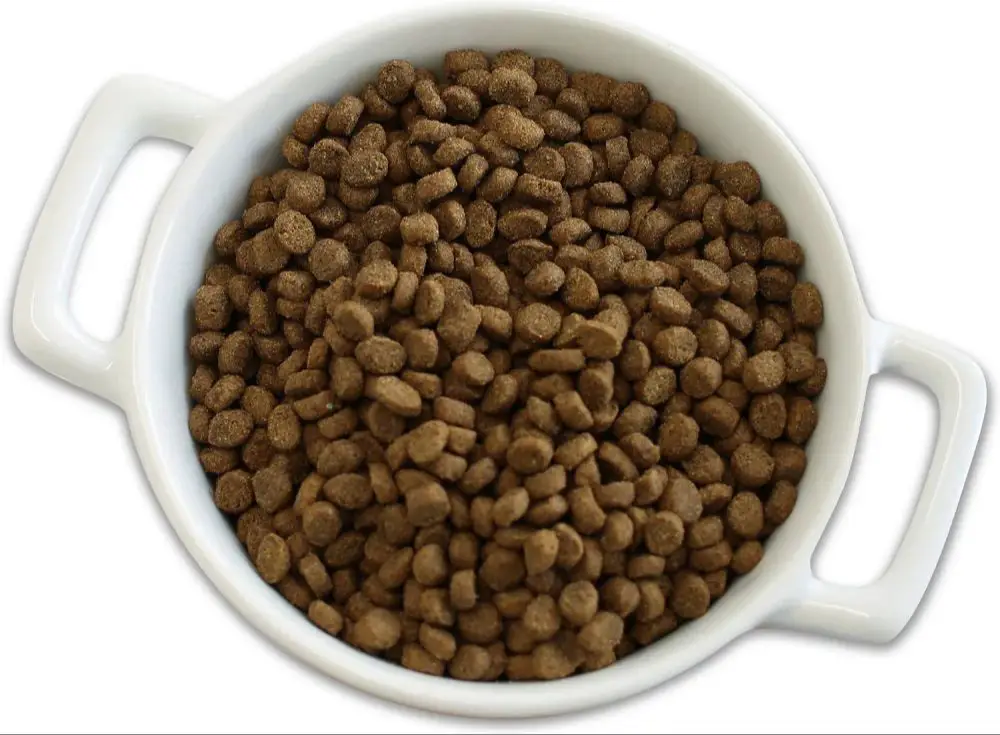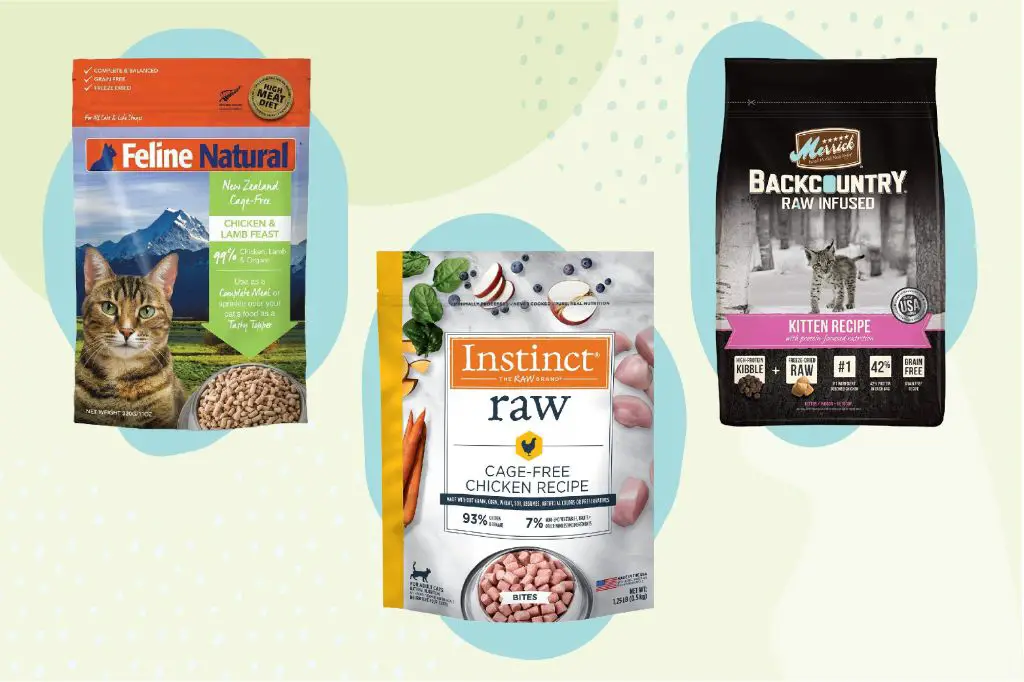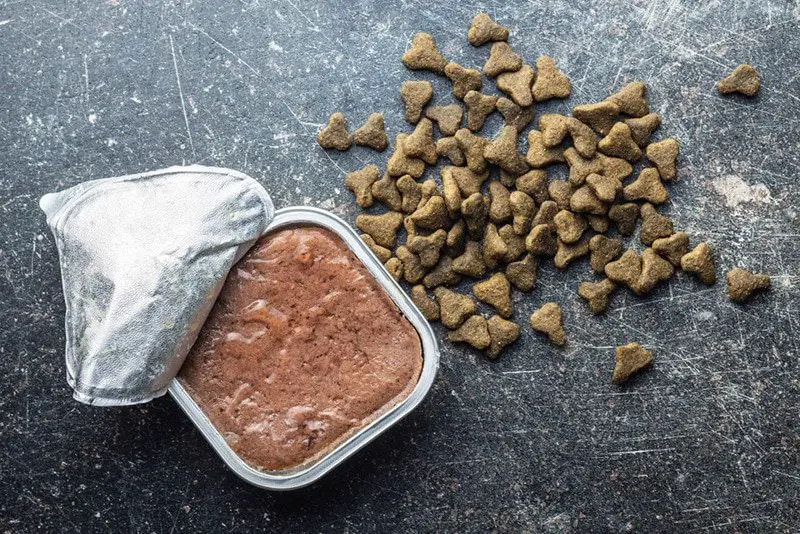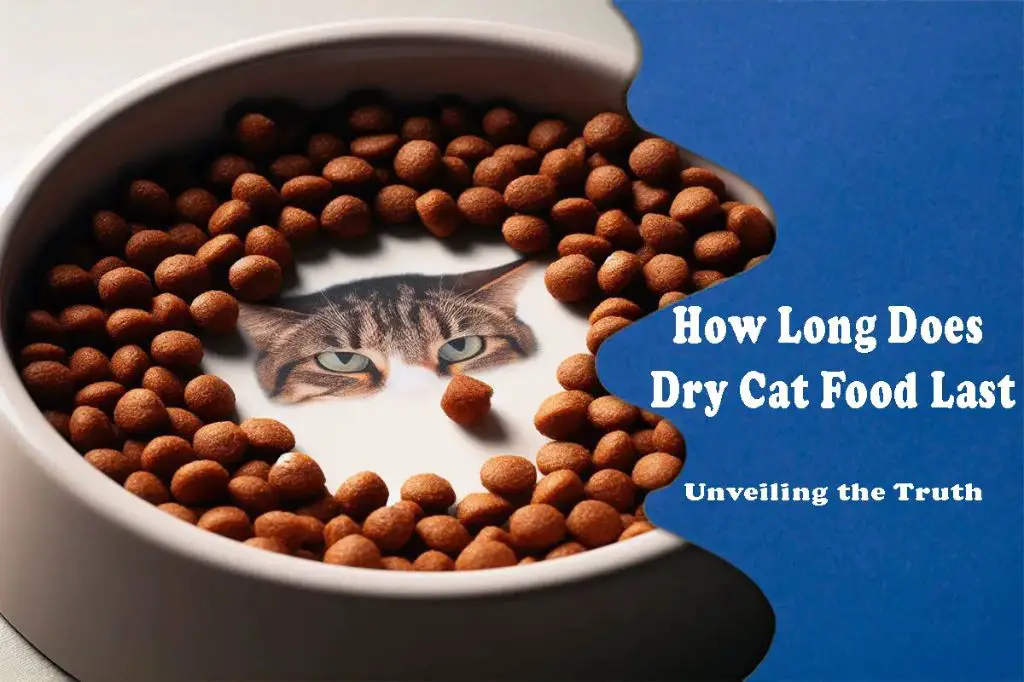Dry cat food refers to cat food that has had most of its moisture removed through a dehydrating process. It often contains around 10% water, whereas wet cat food contains around 75% water. Dry food typically comes in bags, while wet food comes in cans or pouches. Knowing if dry cat food has gone bad is important for a cat’s health and safety. Eating spoiled food can make cats sick. Shelf life depends on factors like ingredients, preservatives, storage, packaging, and signs of spoilage.
Ingredients
Dry cat food contains very little moisture compared to wet food. The main ingredients in most dry cat foods are meat meal, corn, wheat, soy, and rice. Meat meals like chicken, lamb, or fish meal provide protein. Corn, wheat, soy and rice act as binders and provide carbohydrates. Other common ingredients are animal fat, vitamins, minerals, and preservatives (1,2).
The first 5 ingredients listed on a dry cat food label make up the majority of the food. It’s ideal when the first 2-3 ingredients are specific meat meals like chicken meal or fish meal. Meat meals are concentrated sources of quality animal protein. Grains like corn and wheat should appear further down the list, not in the first 3 ingredients. Dry food with lots of plant-based grains and by-products contains less meat protein.

Preservatives
Preservatives play an important role in dry cat food by preventing spoilage and bacterial growth. Since dry food contains very little moisture, preservatives help prolong the shelf life and ensure the food stays fresh and safe to eat (Purina). Some common preservatives used in dry cat food include:
- BHA (butylated hydroxyanisole) – a synthetic antioxidant that prevents rancidity in fats
- BHT (butylated hydroxytoluene) – also an artificial antioxidant
- Ethoxyquin – a chemical preservative often added to fish meal to prevent spoilage
- Mixed tocopherols – a natural preservative derived from vitamin E
- Rosemary extract – a natural antioxidant extracted from rosemary
While BHA, BHT and ethoxyquin help extend shelf life, some studies have raised concerns over potential cancer risks. Many pet owners now prefer natural preservatives like vitamin E and rosemary (The Spruce Pets). When choosing a dry cat food, look for one with natural preservatives and minimal artificial additives.

Packaging
The packaging used for cat food plays an important role in protecting the food and extending its shelf life. Cat food manufacturers put a lot of thought into the packaging materials and design.
Cat food is most commonly packaged in either rigid metal cans or flexible pouches and bags. Metal cans provide an airtight seal that prevents oxygen, light, and moisture from getting in and causing the food to spoil (Cat Food Packaging). The rigid structure also helps protect the food from physical damage. Pouches and bags allow for more lightweight and convenient packaging. They are made from multilayer materials like metalized films, polyester, and polyethylene which provide a barrier to oxygen and moisture (cat food packaging). Some also have an aluminum layer for extra protection.
Well-designed packaging keeps cat food fresh and safe to eat for its intended shelf life. It prevents contact with external contaminants while regulating moisture and oxygen levels inside.
Storage
Properly storing dry cat food is crucial for maintaining its freshness and nutritional value. The best storage practices involve keeping the food in an airtight, pet-safe container, away from excess heat, moisture, and pests.
Dry kibble can quickly go stale when exposed to air. Storing it in an airtight container prevents oxygen from interacting with the fat in the food and causing it to go rancid (Source: https://www.chewy.com/b/storage-accessories-397). Choose a container made of food-safe plastic, steel, or glass. Popular options are screw-top buckets, canisters with rubber seals, and PET plastic food bins with snap-lock lids.
Keep the container in a cool, dry place away from heat and moisture. Ideal conditions are similar to pantry storage for human food, around 50-75°F at 35-65% relative humidity. Avoid humid spots like bathrooms or near appliances that give off heat. High temperatures can accelerate food spoilage while moisture leads to mold (Source: https://www.amazon.com/GreenJoy-Pack-Pet-Plastics-Container-Waterproof/dp/B07F77LSJ5).
Make sure the food is completely sealed off from pests like insects, rodents, and mites. Bins with silicone or rubber gaskets help block any entry points for bugs. Clean plastic containers regularly to prevent odors that attract pests.
Shelf Life
The shelf life of unopened dry cat food depends on the ingredients, but it generally lasts around 12-18 months past the date of manufacture (see Citation). Once opened, sealed bags of dry food usually stay fresh for 4-6 weeks. Storing the food properly in a cool, dry place can help extend its shelf life.
Dry food contains preservatives that prevent spoilage and bacterial growth. As long as the packaging remains air-tight, the food inside should stay safe to eat within the timeframes mentioned. However, food that has passed expiration or that has been opened for many months may start to lose nutritional value or taste, even if it’s not visibly spoiled.
Pay attention to any changes in the food’s texture, smell or appearance over time. Trust your judgment – if it seems stale, it’s better to be safe and purchase a new bag.
Signs of Spoilage

There are a few key signs to look out for to determine if dry cat food has spoiled:
Smell – Fresh, unspoiled dry cat food should have little to no smell. If the food smells rancid, musty, or unpleasant in any way, it has likely spoiled and should be thrown out (https://www.quora.com/How-can-you-tell-if-dry-cat-food-is-stale).
Texture – Dry cat food pellets or kibble should be hard and crunchy. If they have become soft, cracked, or mushy, that is a sign they are past their prime (https://petrestart.com/four-signs-that-your-dry-cat-food-is-bad/).
Appearance – Look out for mold growth, clumping, or discoloration. If the pellets look dull, dusty, or changed in color, they should not be fed to cats anymore (https://sports.yahoo.com/does-cat-food-expire-keeping-163720240.html).
Health Risks
Feeding your cat spoiled dry food can be extremely dangerous and lead to food poisoning. According to Catster, ingesting rancid fats and proteins from spoiled food can cause gastrointestinal issues like vomiting, diarrhea, and abdominal pain. Salmonella and other pathogens that grow in spoiled cat food can also make cats very sick with fever, lethargy, and dehydration. In severe cases, cats may suffer from bloody stools, seizures, or even organ failure. Kittens, senior cats, and cats with weakened immune systems are most at risk. If your cat shows any symptoms of food poisoning like vomiting, diarrhea, lethargy, or loss of appetite after eating spoiled food, bring them to the vet immediately for treatment. Never take chances with contaminated food as the results could be fatal.
When in Doubt
If you are ever unsure about the safety or freshness of your cat’s dry food, it’s better to be cautious and throw it out. Dry cat food that has gone rancid or stale can make your cat sick. According to Quora, some signs of spoiled dry cat food include a change in color, texture, or smell. However, sometimes these changes are subtle. When in doubt, remember it’s better to waste a bit of food than to risk your cat’s health.
Cats have sensitive stomachs, so eating spoiled food can cause vomiting, diarrhea, and other gastrointestinal issues. Don’t take a chance by feeding questionable dry food to your cat. Check the expiration or best by date on the package to ensure it’s still within the manufacturer’s recommended shelf life. When opening a new bag, inspect the food and take note of how it looks and smells to have a baseline. Then monitor the food for changes as your cat eats from the bag. Any sign of mold, an off smell, visible bugs, or extreme hardness may be flags to discard the food.
Feeding spoiled cat food can be dangerous, especially for kittens, senior cats, or cats with compromised immune systems. If your cat seems unwilling to eat their food or acts sick after meals, the food could be the culprit. When in any doubt, follow your instincts and throw the food away to get your cat fresh, high-quality food.
Conclusion

In summary, dry cat food can go bad eventually due to its organic ingredients, but has a relatively long shelf life if stored properly. The key factors that determine shelf life are ingredients, preservatives, packaging, and storage conditions. Signs of spoiled dry cat food include color changes, texture changes, smell, and mold. Eating spoiled food poses potential health risks to your cat including gastrointestinal upset and food poisoning. When in doubt, remember the mantra: “If spoiled, toss it out”. Properly storing unopened food in a cool, dry place is the best way to maximize freshness and shelf life. Being aware of signs of spoilage and using your best judgment can help avoid feeding spoiled food to your feline companions.

